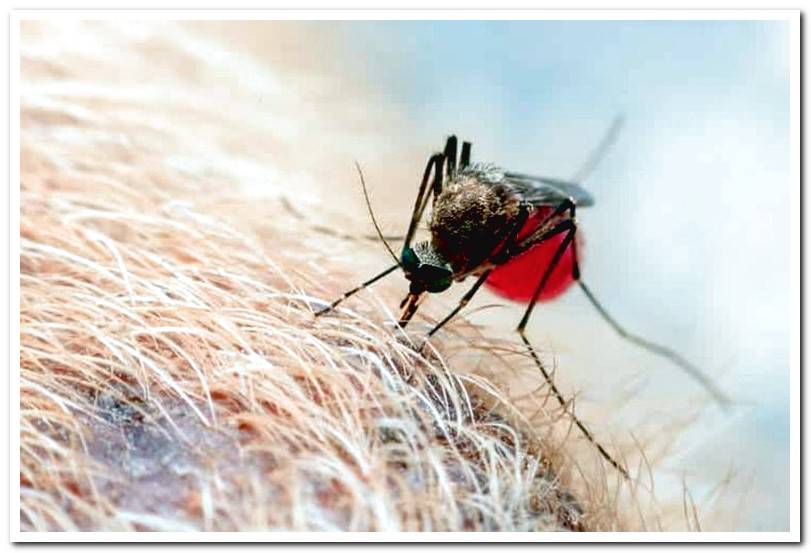
Filariosis is a parasitic disease caused by a worm, the filaria, which is transmitted to the dog through the bite of a mosquito. It is also known by the name of heartworm disease.
And it is that this parasite lodges inside this organ but, also, in the arteries that go to the lungs and the liver. Below we will see how to identify this pathology, how to treat it and, above all, how to prevent it.
- You may also be interested in: Types of intestinal parasites in dogs
Index of contents
- 1 What is filariasis?
- 2 The life cycle of the filaria
- 3 Location of the filaria
- 4 Characteristics of the filaria
- 5 Which dogs get filariasis?
- 6 Symptoms of filariasis in dogs
- 7 How is canine filariosis diagnosed?
- 8 Treatment for filariasis
- 9 How to prevent canine filariasis?
What is filariasis?
This parasitic disease is characterized by the presence of adult filarial worms in the heart, specifically on the right side. It is transmitted by mosquitoes and is distributed throughout the world. It is more frequent in hot climates, since, to spread, it depends on the life habits of the mosquito.
Currently it seems that its incidence is increasing, which has focused on the need to prevent. This is especially important in areas where the mosquito is abundant.
The life cycle of the filaria
The scientific name of the filaria is Dirofilaria immitis. Knowing its life cycle helps us understand preventive measures. It all begins when a mosquito carries filarial infestation larvae into its mouth. When the dog bites, these larvae burrow under the skin.
In the dog’s body they undergo a first transformation between 1 and 12 days later. In this phase they stay about two months, time when they move into the immature worm stage. They are the ones that travel to the heart. If there are males and females they will reproduce, which gives rise to microfilariae a few months later.
They are capable of living for years in the dog’s blood. Hence mosquitoes contract them when they are going to feed, and in them they change into infestant larvae, thus restarting the cycle. Each stage of the filaria may be susceptible to different drugs.

Which dogs get filariasis?
Being a disease closely related to its vector, that is, the insect that transmits it, they will be at greater risk of contagion dogs from areas with more mosquito presence, since they are more exposed to its sting. Thus, large dogs living outside become ill
Symptoms of filariasis in dogs
The symptoms of this disease will depend on the number of worms housed in the animal, its location and the size of the dog. If there are few filarias, the dog may remain asymptomatic. In any case, we must pay attention to clinical signs such as the following:
- Fatigue.
- Exercise intolerance.
- Cough.
- Weight loss.
- Accelerated breathing.
- Fainting.
- Bloody expectorations in dogs with thromboembolism.
- Dogs with liver failure will develop jaundice, which is the yellowing of the skin and mucosa, ascites, bleeding, and anemia. They can collapse and die.
How is canine filariosis diagnosed?
The first thing to keep in mind is that any dog that lives in a risk area that is not given protection against mosquitoes is susceptible to carrying filariae. Taking a blood sample, the vet can perform an analysis to detect the presence of the parasite, specifically an antigen produced by females.
False negatives can occur if there are still no adult worms, which are the ones detected, there are no females in the blood or there are few specimens. You can also look for microfilariae, although its absence does not indicate that the dog is healthy, since there could be only adult worms. Sometimes a chest x-ray is helpful.
It could visualize the enlargement of the right ventricle and the pulmonary arteries, if there are a considerable number of worms in the area. The electrocardiogram or echocardiogram are other tests that also provide information. Blood and urine tests show kidney and liver functions.

Treatment for filariasis
It is very delicate and complex, since the worms cause a lot of damage but, when they die, they will be transported by the circulatory system, being able to obstruct the blood flow at different points, causing serious injuries. So the vet must carefully assess each case and choose one of the possible treatments.
The objective is to eliminate adult worms and microfilariae, implement preventive measures and avoid complications caused by the filariae or their death. Another problem is that the drugs used have side effects that can even be serious. They are usually injected or administered orally by the vet.
The animal may need to be kept at rest. There are cases, especially in older dogs, where treatment is inadvisable. Others will need surgery to remove the adult worms. After treatment, the analyzes are repeated to verify that the dog is free of filariae.
How to prevent canine filariasis?
The veterinaryn, depending on the region in which we live and the characteristics of the dog, will recommend the most suitable prophylaxis. In the market we will find products that prevent the mosquito from biting our dog. Depending on the area, they can be used all year round or only during the season of presence of the insect.
If we suspect that the dog may have filariae, before using these products it is advisable to make an analysis in case it is already infected. Since nothing is going to be 100% effective, we should follow measures to avoid as much as possible the dog’s exposure to mosquitoes.
These come out to feed at dusk. We will protect the dog if we keep it indoors during that time. Avoid breeding areas for mosquitoes, such as standing water. You can also resort to repellent products to use in the environment.
